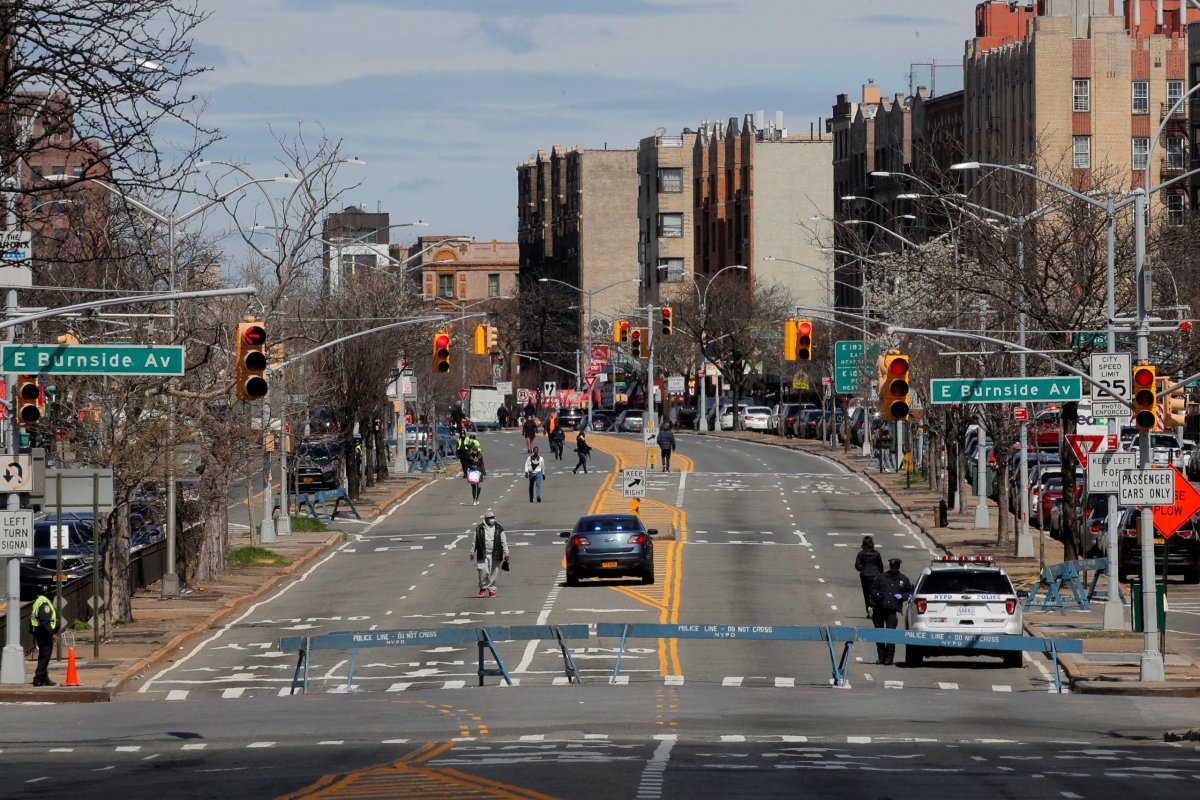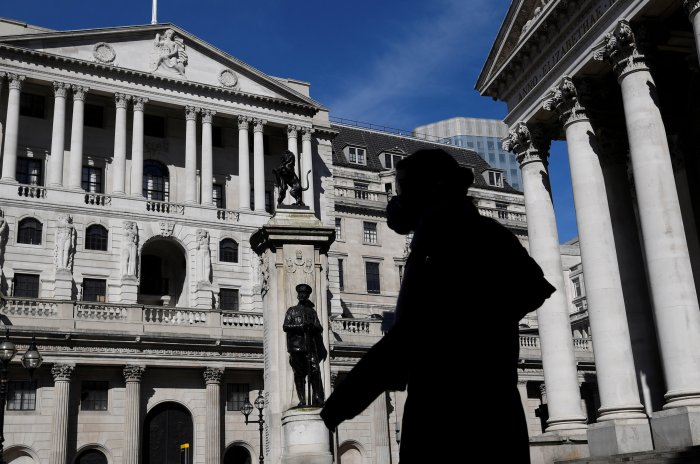WASHINGTON (Reuters) – The U.S. economy shed 701,000 jobs in March, abruptly ending a historic 113 straight months of employment growth as stringent measures to control the novel coronavirus outbreak shuttered businesses and factories, confirming a recession is underway.
The Labor Department’s closely watched employment report on Friday did not fully reflect the economic carnage being inflicted by the highly contagious virus. The government surveyed businesses and households for the report in mid-March, before a large section of the population was under some form of a lockdown, throwing millions out of work.
William Beach, commissioner of the Labor Department’s Bureau of Labor Statistics acknowledged this short-coming in a statement and also noted that data collection for the employment report was adversely affected by the coronavirus. But Beach also said, “we still were able to obtain estimates from our two surveys that met BLS standards for accuracy and reliability.”
The plunge in payrolls, which was the steepest since March 2009 and snapped a record streak of employment gains dating to September 2010, was led by 459,000 job losses in the leisure and hospitality industry, mainly in food services and drinking places. There were also decreases in health care and social assistance, professional and business services, retail trade, manufacturing and construction payrolls.
Economists polled by Reuters had forecast nonfarm payrolls falling by 100,000 jobs last month. Adding a sting to the report, the economy created 57,000 fewer jobs in January and February than previously reported.
The worst is still to come, with a majority of Americans now under “stay-at-home” or “shelter-in-place” orders. A record 10 million Americans filed claims for unemployment benefits in the last two weeks of March. Economists expect payrolls will sink by at least 20 million jobs in April, which would blow away the record 800,000 tumble during the Great Recession.
“We are just seeing the tip of the iceberg when it comes to the collapse of the labor market,” said Joel Naroff, chief economist at Naroff Economics in Holland, Pennsylvania.
Graphic: End of a historic jobs boom , https://fingfx.thomsonreuters.com/gfx/mkt/yzdpxnzkpxe/Pasted%20image%201585917901702.png
Stocks on Wall Street fell, while U.S. Treasury prices rose. The dollar was up against a basket of currencies.
The report could sharpen criticism of the Trump administration’s handling of the public health crisis, with President Donald Trump himself faulted for playing down the threat of the pandemic in its initial phases.
Economists said the jobs bloodbath underscored the urgency for the U.S. Congress to consider additional fiscal stimulus following a historic $2.3 trillion package signed last week by Trump, which made provisions for companies and the unemployed. Both Trump and U.S. House of Representatives Speaker Nancy Pelosi have floated an infrastructure stimulus.
Separately, the Federal Reserve has undertaken extraordinary measures to help companies weather the virus. The United States has the highest number of confirmed cases of COVID-19, the respiratory illness caused by the virus, with more than 243,000 people infected. Nearly 6,000 people in the country have died from the illness, according to a Reuters tally.
MARSHALL PLAN NEEDED?
“Once the peak of the mountain in the virus infection is in sight, businesses will slowly return,” said Sung Won Sohn, a business economics professor at Loyola Marymount University in Los Angeles.
“But a V-shaped recovery is not likely. A Marshall Plan for the U.S. economy will be necessary,” he said, referring to the huge U.S. economic aid program to rebuild Europe after World War Two.
There are also perceptions that the recent fiscal package, which makes generous provisions for the unemployed, and the federal government’s easing of requirements for workers to seek benefits could encourage some not to work.
The unemployment rate rose 0.9 percentage point, the largest single-month change since January 1975, to 4.4% in March. The BLS said the rate could have been 5.4% if it were not for a misclassification error during the survey of households.
Graphic: U.S. jobless rate surged in March , https://fingfx.thomsonreuters.com/gfx/mkt/xlbvgbkkpqd/Pasted%20image%201585923176498.png
With the ranks of the unemployed ballooning, economists say the jobless rate could top 10% in April. The labor force participation rate declined by 0.7 percentage point in March to 62.7 percent. The employment-to-population ratio fell by 1.1 percentage points over the month to 60.0%.
Mounting job losses spell disaster for gross domestic product, which economists believe contracted sharply in the first quarter. They predict that the economy slipped into recession in March.
The National Bureau of Economic Research, the private research institute regarded as the arbiter of U.S. recessions, does not define a recession as two consecutive quarters of decline in real gross domestic product, as is the rule of thumb in many countries. Instead, it looks for a drop in activity, spread across the economy and lasting more than a few months.
“Any doubt about a U.S. recession was just put to rest,” said Chris Low, chief economist at FHN Financial in New York.
Wage growth picked up in March, but that is all in the rear view mirror. Average hourly earnings increased 0.4% in March after increasing 0.3% in February. That lifted the annual increase in wages to 3.1% last month from 3.0% in February.
The average workweek fell to 34.2 hours last month from 34.4 hours in February, with the workweek in the leisure and hospitality industry being shortened by 1.4 hours.
Job losses in March touched nearly every facet of the economy. The healthcare and social assistance industry purged 61,000 jobs in March, with losses mostly in dentists and doctors’ office. Social assistance job losses were in child day care services. Professional and business services lost 52,000 jobs in March, concentrated in temporary help services.
There were also declines in employment at travel agents and reservation services. The retail sector shed 46,000 last month, with job losses in clothing, furniture, and sporting goods, hobby, book, and music stores. But general merchandise stores payrolls increased by 10,000.
Construction employment fell by 29,000 in March. Employment in the ‘other services’ category declined by 24,000, with about half of the loss occurring in personal and laundry services.
Mining lost 6,000 jobs and manufacturing payrolls 18,000. But federal government employment rose by 18,000 in March, boosted by the hiring of 17,000 temporary workers for the 2020 Census.
(Reporting by Lucia Mutikani; Editing by Chizu Nomiyama and Andrea Ricci)























